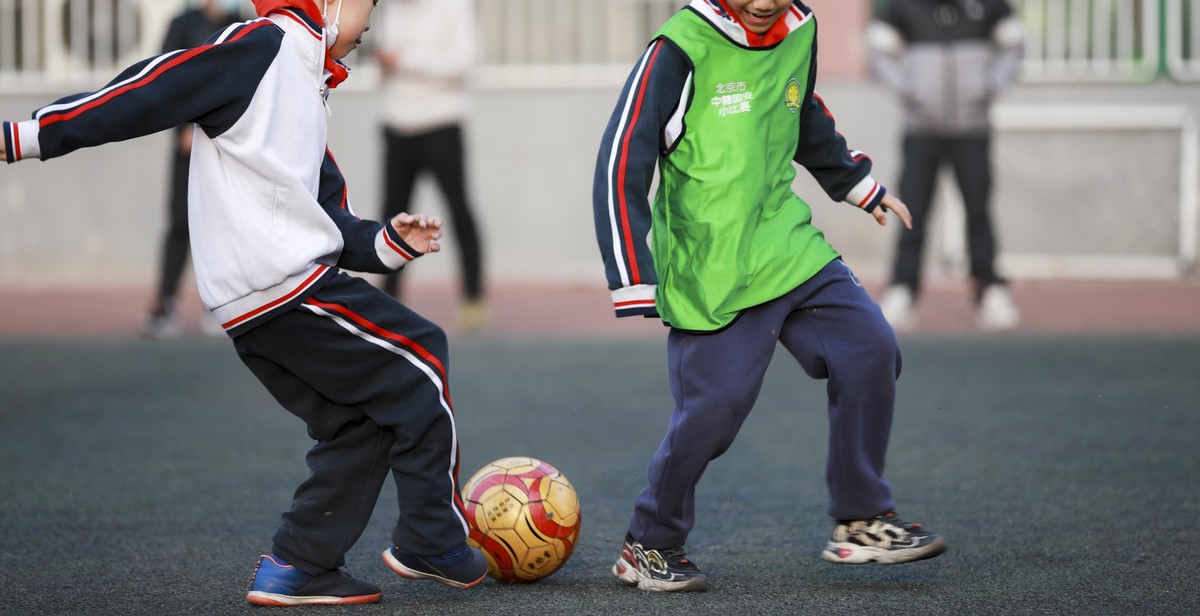How to Enhance Your Soccer Speed and Agility: Training Exercises for Quickness and Change of Direction
As a professional soccer player with over a decade of experience, I know the importance of speed and agility in the game. The ability to move quickly and change direction in an instant can be the difference between winning and losing.
However, developing speed and agility requires more than just natural talent. It takes consistent training and dedication to improve these skills. In this article, I will share with you some of the most effective training exercises that will help you enhance your soccer speed and agility.
The Importance of Speed and Agility in Soccer
In soccer, speed and agility are essential skills that every player needs to possess. They allow you to quickly move around the field, dodge opponents, and make quick passes or shots. Without these skills, you may struggle to keep up with the pace of the game, which can affect your performance and ultimately your team’s success.
The Best Training Exercises for Speed and Agility
There are many training exercises that can help you improve your speed and agility on the soccer field. Some of the most effective ones include:
- Agility ladder drills
- Cone drills
- Sprints
- Jumping exercises
- Plyometric exercises
By incorporating these exercises into your training routine, you can develop the speed and agility necessary to excel in soccer.

The Importance of Speed and Agility in Soccer
Speed and agility are essential components of soccer performance that can make a significant difference in the outcome of a game. Soccer is a fast-paced sport that requires players to move quickly and change direction frequently. The ability to accelerate, decelerate, and change direction with precision can give players an advantage over their opponents.
How Speed and Agility Affect Performance
Speed and agility are critical for soccer players in several ways. First, they allow players to get to the ball faster, increasing their chances of winning possession and creating scoring opportunities. Second, speed and agility help players defend against opponents by enabling them to close down space quickly, intercept passes, and make tackles. Third, they allow players to move into open spaces more effectively, creating passing options and opportunities to receive the ball.
Furthermore, speed and agility are essential for players in all positions, not just forwards. Defenders need to be quick and agile to keep up with fast attackers and make crucial tackles. Midfielders need to be able to change direction quickly to evade opponents and create space for their teammates. Even goalkeepers need to be agile to make saves and cover their posts.
The Benefits of Improving Soccer Speed and Agility
Improving speed and agility can have numerous benefits for soccer players. First, it can enhance a player’s overall performance, making them more effective on the pitch. Second, it can reduce the risk of injury by improving a player’s ability to control their movements and avoid collisions. Third, it can increase a player’s confidence, both on and off the pitch, by giving them the tools they need to succeed.
Moreover, improving speed and agility can also have a positive impact on a player’s physical fitness. It can improve cardiovascular endurance, increase muscle strength, and enhance coordination and balance. These benefits can translate into improved performance in other areas of soccer, such as shooting, passing, and dribbling.
| Summary |
|---|
| Speed and agility are crucial components of soccer performance that can enhance a player’s overall effectiveness on the pitch. Improving speed and agility can increase a player’s chances of winning possession, defending against opponents, and creating scoring opportunities. It can also reduce the risk of injury and improve a player’s physical fitness, confidence, and performance in other areas of soccer. |

Training Exercises for Quickness and Change of Direction
Speed and agility are essential for soccer players to succeed on the field. The ability to quickly change direction, accelerate, and decelerate can give players an advantage over their opponents.
Dynamic Warm-Up
Before starting any training exercises, it is important to properly warm up your muscles to prevent injury. A dynamic warm-up is a series of exercises that increase your heart rate, activate your muscles, and improve your range of motion.
- High knees
- Butt kicks
- Side shuffles
- Walking lunges
- Leg swings
Cone Drills
Cone drills are an excellent way to improve your footwork, agility, and change of direction. Set up cones in a zigzag pattern or in a square shape and practice weaving in and out of them at different speeds.
| Zigzag Cone Drill | Square Cone Drill |
|---|---|
 |
 |
Ladder Drills
Ladder drills are another effective way to improve your footwork and coordination. Set up an agility ladder on the ground and perform a variety of drills, such as high knees, lateral hops, and quick feet.
Agility Ladder Drills:
- Two feet in each square
- Single-leg hops
- Lateral shuffles
- Ickey shuffle
- Quick feet
Plyometric Exercises
Plyometric exercises are explosive movements that improve your power and quickness. They involve jumping, hopping, and bounding and can include exercises like box jumps, squat jumps, and lateral bounds.
Sprint Training
Sprinting is an important component of soccer, and incorporating sprint training into your workouts can improve your speed and acceleration. Practice short sprints, long sprints, and interval training to improve your overall speed.
By incorporating these training exercises into your workouts, you can enhance your soccer speed and agility and become a more effective player on the field.

Strength Training for Speed and Agility
Strength training is crucial for improving speed and agility in soccer. It helps to build muscle mass and increase overall body strength, which in turn improves power, speed, and agility on the field. Incorporating strength training into your soccer training routine can also help prevent injury by strengthening muscles and improving joint stability.
Importance of Strength Training
Strength training can help improve your speed and agility in a number of ways:
- Increased muscle power: Stronger muscles can generate more force, resulting in faster sprints and more explosive movements on the field.
- Better joint stability: Strength training can help improve joint stability, which is essential for quick changes of direction and sudden stops on the soccer field.
- Improved coordination: Strength training can help improve coordination between different muscle groups, leading to smoother and more efficient movements on the field.
Exercises to Improve Strength
There are a variety of exercises that can help improve strength for soccer players:
| Exercise | Description |
|---|---|
| Squats | A classic exercise that helps build leg and core strength. Stand with your feet shoulder-width apart, and squat down as if you were sitting in a chair. Keep your back straight and your knees over your toes. Repeat for several reps. |
| Lunges | Another great exercise for building leg strength. Step forward with one foot, and bend your knees to lower your body until your back knee is almost touching the ground. Repeat on the other side. |
| Deadlifts | A more advanced exercise that targets the lower back and hamstrings. Stand with your feet shoulder-width apart, and bend down to grab a barbell or dumbbells. Lift the weight up using your legs and lower back, keeping your arms straight. |
| Planks | An excellent exercise for building core strength. Get into a push-up position, but instead of lowering yourself down, hold your body in a straight line from head to toe. Hold for as long as you can. |
Make sure to incorporate strength training exercises into your soccer training routine at least a few times a week. Start with lighter weights and gradually increase as you get stronger. Remember to always use proper form and technique to avoid injury.

Nutrition and Hydration for Optimal Performance
As a soccer player, your body needs to be fueled properly to perform at its best. Eating a balanced diet with the right nutrients can help improve your speed and agility, while also reducing the risk of injury.
Fueling Your Body
Carbohydrates are the primary source of fuel for your muscles during exercise. Eating complex carbohydrates, such as whole grains, fruits, and vegetables, can provide a steady stream of energy throughout your workout. It’s also important to consume enough protein to help repair and build muscle tissue.
Avoiding sugary and processed foods is important, as they can cause a spike in blood sugar followed by a crash, leaving you feeling fatigued and sluggish. Instead, opt for nutrient-dense foods such as lean proteins, complex carbohydrates, and healthy fats.
Hydration
Staying hydrated is crucial for optimal performance. Dehydration can lead to fatigue, cramps, and decreased cognitive function. Aim to drink at least 8-10 glasses of water per day, and more if you are exercising or playing soccer in hot weather.
Electrolytes, such as sodium and potassium, are also important for proper hydration and muscle function. Sports drinks can be a good source of electrolytes, but be sure to read the labels and avoid drinks with added sugars.
Sample Meal Plan
| Meal | Food |
|---|---|
| Breakfast | Oatmeal with berries and nuts |
| Snack | Apple slices with almond butter |
| Lunch | Grilled chicken salad with mixed greens and vegetables |
| Snack | Greek yogurt with honey and granola |
| Dinner | Salmon with quinoa and roasted vegetables |
Remember, nutrition and hydration are key components of optimal performance on the soccer field. By fueling your body with the right nutrients and staying hydrated, you can improve your speed, agility, and overall performance.

Recovery and Injury Prevention
Recovery and injury prevention are critical aspects of any training program, especially when it comes to improving speed and agility in soccer. Injuries can derail progress and lead to extended periods of time on the sidelines, so it’s essential to implement strategies to keep your body healthy and prevent injuries.
Importance of Recovery
Recovery is the process of allowing your body to rest and repair after intense physical activity. It’s essential to incorporate recovery time into your training schedule to prevent burnout and overuse injuries. Some effective recovery techniques include:
- Stretching: Stretching before and after exercise can help prevent muscle strains and improve flexibility.
- Rest days: Taking a day off from training can help your body recover and reduce the risk of injury.
- Hydration: Drinking plenty of water before, during, and after exercise can help prevent cramps and improve recovery time.
- Massage: Massages can help improve circulation, reduce muscle soreness, and aid in recovery.
Injury Prevention Strategies
Preventing injuries is crucial to maintaining a consistent training regimen. Some effective injury prevention strategies include:
- Proper warm-up: Warming up before exercise can help increase blood flow to your muscles and prevent injury.
- Cross-training: Incorporating different types of exercise can help prevent overuse injuries and improve overall fitness.
- Proper equipment: Wearing appropriate footwear and protective gear can help prevent injuries.
- Listening to your body: Paying attention to your body’s signals and adjusting your training accordingly can help prevent injury and improve recovery time.
| Exercise | Benefits |
|---|---|
| Foam rolling | Improves circulation and reduces muscle soreness. |
| Yoga | Improves flexibility and reduces the risk of injury. |
| Dynamic stretching | Increases blood flow and prepares your muscles for exercise. |
By incorporating recovery and injury prevention strategies into your training program, you can improve your speed and agility while reducing the risk of injury. Remember to listen to your body and adjust your training accordingly to achieve your goals safely and effectively.
